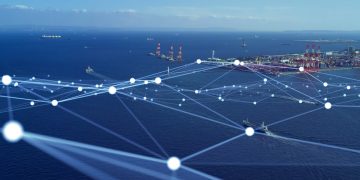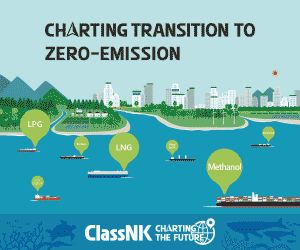By examining the current production capacity for ammonia, the existing regulatory landscape, fuel storage options, supply and power generation technologies, along with techno-economic analyses and risk-based case studies, EMSA has identified the key challenges for adopting ammonia as fuel.
Advantages
As the report notes, green ammonia is a promising candidate as a maritime fuel to decarbonize the shipping industry and there are many arguments playing in its favour.
Being naturally carbon-free, it has the potential to reduce drastically the emissions both from GHG and from air emissions perspectives
There is also existing knowledge in the shipping industry on ammonia as a cargo, providing a sound basis to develop upon. Knowledge from other industries (fertilizers) is also available, from which the entire supply chain can benefit from: ammonia has and is being used and transported onshore for decades and this lead to relevant understanding on how to transport and handle ammonia safely.
Another important factor is that ammonia production technologies are mature enough to support the uptake of its synthesis, but there is a need of further development and scaling on the production of green hydrogen, the backbone of green ammonia production.
The prospect is however looking good for production of green ammonia, at the time of writing there has been announced more than 130 Mt per year of green and blue ammonia production facilities.
Judging by the number of announced JDP about ammonia fueled ship including announce about ammonia engine development, ammonia as marine fuel will take up in the coming years
EMSA said.
Barriers
On the other hand there are still many barriers and challenges to overcome. The first barrier is still on the production of green ammonia, much of the new announcement of green ammonia production is likely go to the fertiliser industry, so there is a need for considerable scaling up of renewable energy capacity to support its uptake for ammonia as a marine fuel.
As all segments will be increasingly demanding for green energy, its availability is seen as a major barrier for the proper uptake of green ammonia production.
Even if ammonia is made available at large scale, shipping will be competing with other industry segments, either those currently already using widely ammonia or those that see it as a hydrogen carrier.
Notwithstanding the above, the concern of the issue of ammonia production costs remains as based on current estimates, ammonia as a fuel should yield considerably higher TCO values than VLSFO.
In addition, the introduction of regional market-based measures (Fit for 55) provides a good starting point to promote ammonia as a fuel and to improve its TCO performance.
However, being shipping an international industry, international decarbonization policies are needed, otherwise there may be an uneven focus and distribution of investments which may hinder the uptake of ammonia as a fuel.
Another barrier lies on the lack of existing regulations on ammonia as a fuel. Although the existence of a relevant basis, being ammonia a corrosive and toxic gas, when considered as a fuel, the safety and reliability concerns need the accounted for more carefully in the regulations when.
Contrary to other alternative fuels under consideration by the industry, current regulations cannot be easily transferable to ammonia as a fuel.
For these regulations to be developed, it is relevant that further analysis, investigations, and developments to be made to better understand and tackle the safety concerns relating to usage of ammonia as a fuel.
The knowledge needs to increase and to be shared with all stakeholders: legislators, class societies, owners, engine makers, equipment providers, operators, port authorities, etc
the report mentions.
The study highlights that ammonia as a marine fuel is possible, but to unblock the barriers as identified above, there is a need for coordination among industry and government to:
- Manage and expand the use of renewable energy;
- Promote the development of decarbonization policies;
- Foster the development of new technologies to improve the production efficiency;
- Develop an international regulation framework at IMO for using ammonia as a fuel;
- Encourage collaboration between stakeholders to address technology and safety issues;
- Carry out additional studies to develop a better understanding of the risks and safety challenges of using ammonia as a marine fuel and how to mitigate them.


































































